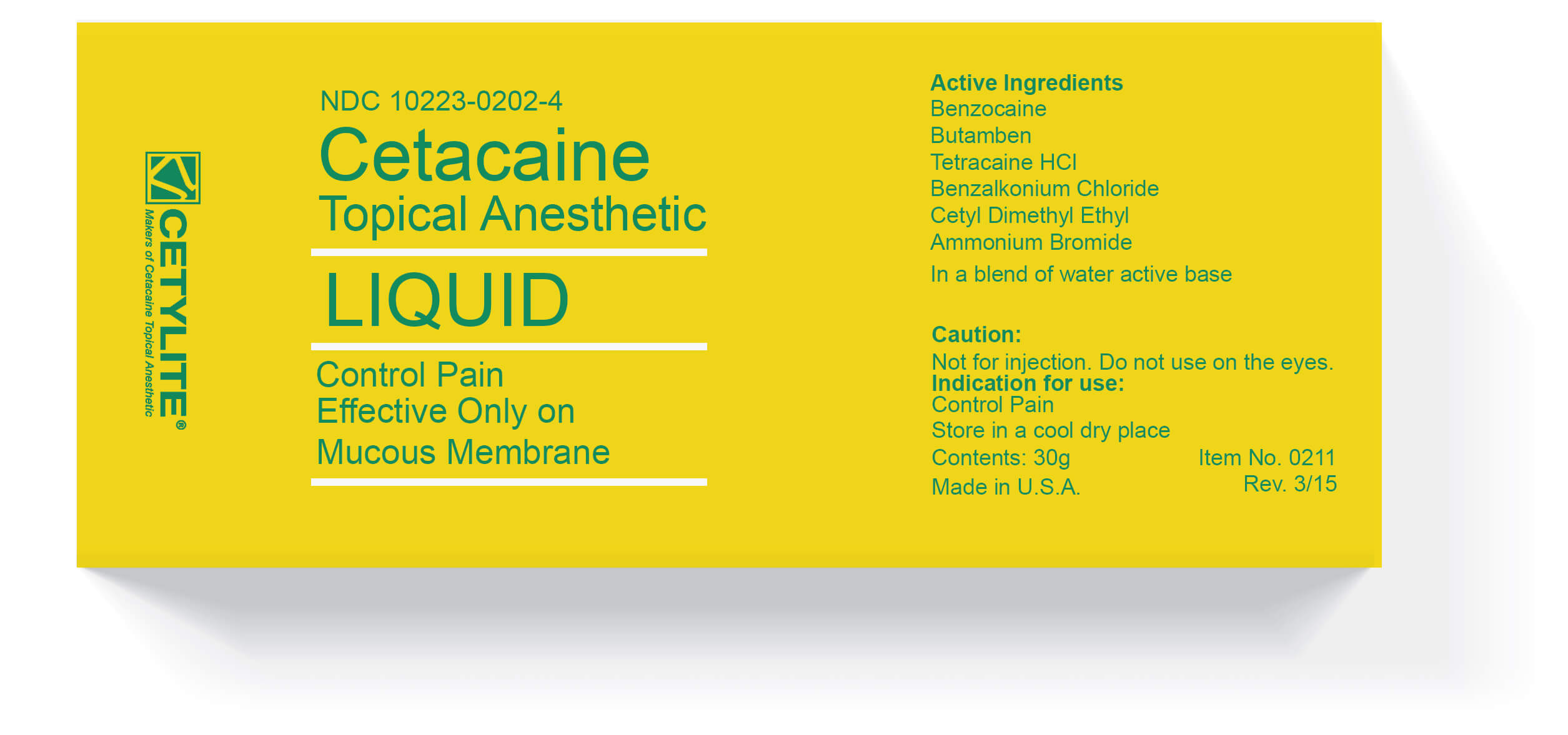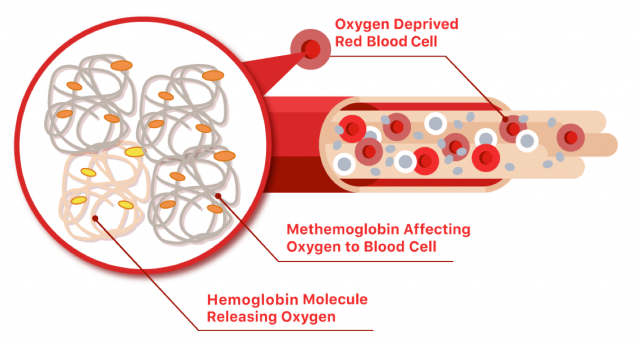Benzocaine Side Effects
Benzocaine, a local anesthetic, can cause blisters, swelling, stinging and other skin reactions. People commonly report sore throat and gastrointestinal symptoms. Methemoglobinemia, a potentially fatal blood disorder, is a rare but serious side effect. Infants or young children should not use benzocaine.
Article Continues Below

Board-certified physicians medically review Drugwatch.com content to ensure its accuracy and quality.
Drugwatch.com partners with Physicians’ Review Network Inc. to enlist specialists. PRN is a nationally recognized leader in providing independent medical reviews.
Reviewer specialties include internal medicine, gastroenterology, oncology, orthopedic surgery and psychiatry.
Drugwatch.com has been empowering patients for more than a decade
Drugwatch.com has provided reliable, trusted information about medications, medical devices and general health since 2008. We’ve also connected thousands of people injured by drugs and medical devices with top-ranked national law firms to take action against negligent corporations.
Our team includes experienced medical writers, award-winning journalists, researchers and certified medical and legal experts. Drugwatch.com is HONCode (Health On the Net Foundation) certified. This means the high-quality information we provide comes from credible sources, such as peer-reviewed medical journals and expert interviews.
The information on Drugwatch.com has been medically and legally reviewed by more than 30 expert contributors, including doctors, pharmacists, lawyers, patient advocates and other health care professionals. Our writers are members of professional associations, including American Medical Writers Association, American Bar Association, The Alliance of Professional Health Advocates and International Society for Medical Publication Professionals.
About Drugwatch.com
- Assisting patients and their families since 2008.
- Helped more than 12,000 people find legal help.
- A+ rating from the Better Business Bureau.
- 5-star reviewed medical and legal information site.
Testimonials
"Drugwatch opened my eyes to the realities of big pharmacy. Having a family member with major depression and anxiety, I was looking for information on her medications. I found information that was very helpful, that her psychiatrist never told her."
- Common Side Effects
- Blisters, swelling, red eyes, sore throat, gastrointestinal upset and stinging sensation
- Serious Side Effects
- Cyanosis, allergic reactions and methemoglobinemia
Most Recent Benzocaine Side Effects Information
Benzocaine side effects can include skin reactions, red eyes, sore throat, fever and cyanosis (a bluish tinge of the fingernails, lips, skin, palms or nail beds). Skin reactions may present as burning, stinging, blistering, swelling or flaking. Allergic reactions are also possible.
Some patients develop methemoglobinemia, a serious and potentially life-threatening condition, when taking benzocaine. The drug is no longer recommended for oral use in young children due to this possibility.
As of September 30, 2024, the most common side effects reported to the Food and Drug Administration’s Adverse Events Reporting System were due to oxygen deprivation. These conditions included methemoglobinemia, cyanosis and difficulty breathing. Methemoglobinemia had the most reports, making up 32% of the total side effect cases reported.
| FDA Adverse Event Reports for Benzocaine Side Effects | |
|---|---|
| Total cases reported | 1,345 |
| Serious cases (including deaths) | 994 |
| Deaths | 44 |
Disclaimer: Reports sent to the FDA don’t necessarily mean the drug caused an adverse event. Consult a health care professional before stopping or changing medication.
The cases reported to the FDA may not provide a full picture of benzocaine’s safety. They represent only drugs specifically listed as benzocaine. This can exclude other formulations that aren’t listed as benzocaine but contain it. You should be aware of the risks of topical anesthetics containing benzocaine before using them.
Common Benzocaine Side Effects
Localized skin reactions, nausea and vomiting are some common benzocaine side effects. These effects are typically mild and temporary.
- Flaky skin
- Redness
- Stinging or burning sensation
- Upset stomach
Other side effects, like skin discoloration, headache and fever, can signal a serious reaction. Specifically, cyanosis may indicate low blood oxygen levels associated with methemoglobinemia.
Serious Benzocaine Side Effects
Some patients who use benzocaine products develop a serious reaction called methemoglobinemia. This complication is more likely with higher doses.
Allergic reactions are another possible serious benzocaine side effect. Severe allergic reactions can cause anaphylaxis, which is sometimes fatal, or contact dermatitis. Contact dermatitis can cause skin to slough off and become infected.
In one case study published in BMJ Case Reports, a man suffered gangrene and required a skin graft after using a 5% benzocaine product.
Notify your doctor if you notice symptoms such as difficulty breathing, skin discoloration or signs of infection. They could indicate a serious health condition that requires medical attention.
Benzocaine and Methemoglobinemia
Some patients develop a potentially fatal complication called methemoglobinemia after using benzocaine. This condition causes elevated levels of methemoglobin in the blood. Methemoglobin is a type of protein that cannot bind to oxygen, so excess levels reduce the amount of oxygen carried through the blood. Left untreated, this can cause coma or death.
- Cyanosis (pale, gray or blue-colored skin)
- Dizziness
- Fatigue
- Headache
- Rapid heart rate
- Shortness of breath
There have been some lawsuits concerning methemoglobinemia and benzocaine, but none were widespread.
When To Seek Medical Attention
You should seek medical attention if you notice any symptoms consistent with methemoglobinemia. These symptoms grow more severe as methemoglobin levels increase in the blood.

At methemoglobin levels around 10%, you may notice early signs of cyanosis, such as a bluish tinge to your skin. At 20%, symptoms including anxiety, headaches and light-headedness may develop. Confusion and loss of consciousness can happen with methemoglobin levels between 30% and 50%. Once they cross 50%, the risk of seizures and coma increases. There is a heightened risk of fatality at levels above 70%.
Case Study: Benzocaine Throat Spray and Methemoglobinemia
After undergoing stomach surgery, a 46-year-old woman used a benzocaine throat spray to relieve pain. However, she used too much of the spray over four days — resulting in an overdose. A case report in the Journal of Pharmacy and Therapeutics said this caused her to have breathing problems, and her skin turned blue.
Diagnosis & Treatment
Doctors diagnosed her condition as methemoglobinemia. This condition makes it difficult for the blood to carry oxygen.
Her methemoglobin levels — which should typically be under 1% — were extremely high at 38.8%.
The doctors treated her with methylene blue, which effectively reversed the methemoglobinemia. After receiving two doses of the treatment, the woman began to feel better, and her oxygen levels returned to normal.
Conclusion
The authors said the case underscored the severe dangers of overusing benzocaine products. They further noted that methemoglobinemia requires prompt intervention to prevent severe harm. Following dosage guidelines closely is essential to avoid harmful side effects.
“Clinicians have long pointed out that ambiguous package instructions for use of the spray canisters of benzocaine products can be easily misinterpreted and can lead to potential overdoses.”
FDA Warnings and Actions
In 2018, the FDA announced a stronger warning about the risk of developing methemoglobinemia. The announcement revealed the FDA estimated that over 400 patients developed methemoglobinemia after using benzocaine.
The agency also advised against the use of benzocaine in teething products for young children. The FDA concluded that the risks to young children outweighed the benefits of using benzocaine. They required drug manufacturers to stop marketing benzocaine teething products for children under the age of 2.
“The FDA is warning that OTC oral drug products containing benzocaine should not be used to treat infants and children younger than 2 years... These products carry serious risks and provide little to no benefit for the treatment of oral pain including teething.”
With this announcement, the FDA took steps to ban benzocaine in products for infants and young children. It also required a warning about the risk of methemoglobinemia in all prescriptions containing benzocaine. The agency recommended that manufacturers of over-the-counter products standardize warnings across product labels.
Benzocaine Alternatives
Multiple topical anesthetics are safe and effective alternatives to benzocaine. If you have a benzocaine allergy, you may be able to use several other topical anesthetics on the market. For example, lidocaine is a similar but stronger medicine than benzocaine. So, it needs a lower concentration to be effective.
However, not all versions of these medications are appropriate for all body parts. There are many versions of local anesthetics, ranging from creams, rinses and injections. Be sure to read the label thoroughly before using any new medications.
- Dibucaine
- Lidocaine
- Pramocaine
- Tetracaine
Local anesthetics work by blocking pain receptors from sending signals to your brain. According to VeryWellHealth, many local anesthetics end with “caine” due to having a chemical structure similar to cocaine. However, unlike cocaine, these drugs are not addictive, nor do they raise blood pressure.
For pain relief from infant teething, doctors generally recommend drug-free alternatives. These include massaging the gums and using a firm rubber teething ring.
According to the Professional Home for Oncology Nurses, a saltwater and baking soda rinse can promote oral health and relieve mild pain from mouth sores. Be sure to use the correct ratio: 1 teaspoon of baking soda and 1 teaspoon of salt for every 4 cups of water.
Editor Lindsay Donaldson contributed to this article.
Calling this number connects you with a Drugwatch.com representative. We will direct you to one of our trusted legal partners for a free case review.
Drugwatch.com's trusted legal partners support the organization's mission to keep people safe from dangerous drugs and medical devices. For more information, visit our partners page.


